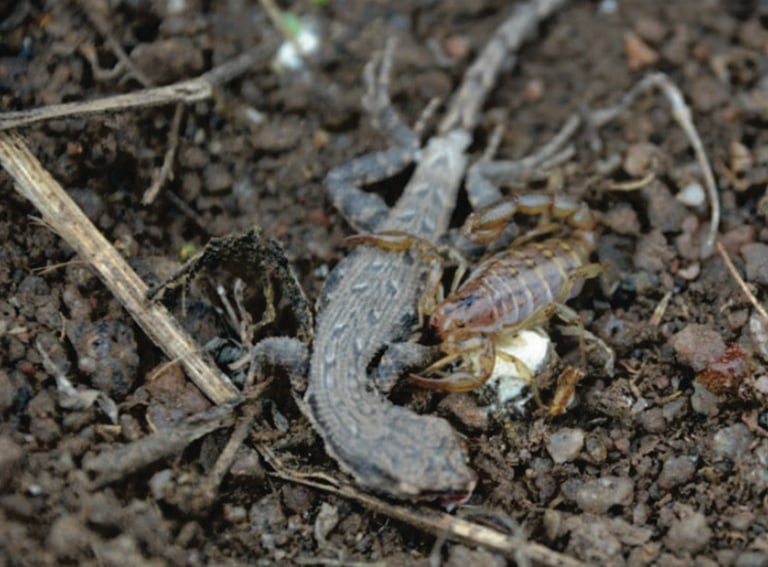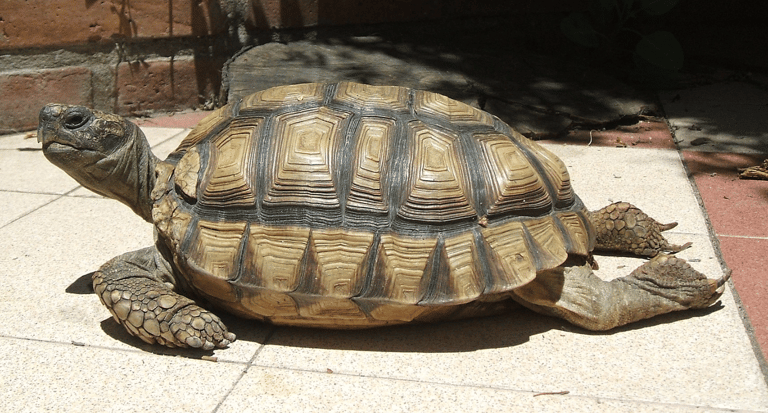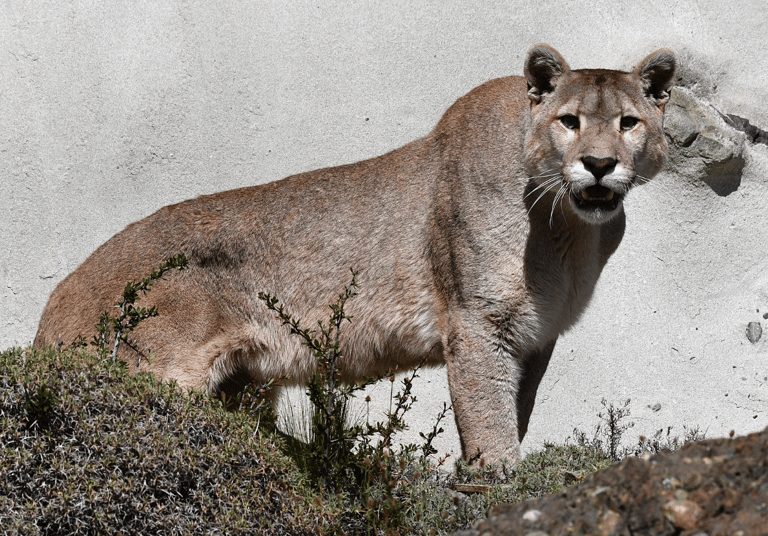Vertebrate Biodiversity
San Juan, Ischigualasto
Ortiz SG, Acosta JC, & Murúa F. 2003
Fauna de vertebrados y actividad minera: Estudio de línea de base en la cuenca del río Castaño, San Juan, Argentina [Fauna of vertebrates and mining activity: Base line study in the Castaño river basin, San Juan, Argentina].
Multequina 12, 23-35.
The goal of this paper was to make a diagnosis of the composition and conservation status of vertebrates and their habitats in the Castaño River. Vulnerable species and critical areas that show an old mining tradition were defined. The methodology was organized considering: 1) inventory, and 2) evaluation of habitats and conservation status. The 63 vertebrate species found were classified as: 1 fish, 2 frogs, 5 reptiles (4 lizard and 1 snake), 51 birds and 4 mammals. Habitats occupied by fauna were delimited and classified as: a) hydrophytic communities and riparian forest, and b) xerophytic shrub steppe. Each habitat was stratified, and active species occupation was estimated. In relation to the conservation status of birds, 37 % shows some problem. Critical areas used by birds, mostly as nesting and rearing places, are suggested.






Acosta JC, Murúa F, & Blanco G. 2004
Chelonoidis chilensis (Argentine tortoise).
Herpetological Review 35, 53-54.
Chelonoidis chilensis is one of three terrestrial Argentinian tortoises contained within the family Testudinidae. It is distributed from SW Bolivia and the West, Paraguaya to the Colorado River and the boundary of Rio Negro Province, Argentina (Cei 1993. Mon. 14 Mus. Reg. Sci. Nat. Torino, 949 pp.). This species has also been reported from the eastern portion of the San Juan Province, Argentina by the Departament of Valle Fertil (Avila et al. 1998. Cuad. Herp. 12:11-29). It has been recently designated as "Threatened" in Argentina (Lavilla et al. 2000. Asoc. Herp. Arg., 97 pp.) and has the status of "Maximum Priority of Conservation" in Ischigualasto Park, San Juan Province (Acosta and Muria 1998. Multequina 7:49-59).
Here we report the first incidence of predation on C. chilensis in Provincial Ischigualasto Park, Valle Fertil Department, San Juan, Argentina (30°05'S, 67°55W). On 10 April 2001, in the North Sector of Overo Mountain, an adult C. chilensis that had recently been killed was found. The puma (Puma concolor) and the fox (Pseudalopex griseus) are the primary predators within the park (Acosta and Munia 1999. Multequina 8:121-129). The injuries on the carapace of the tortoise (size of canine mark, space between canine) indicate that they were made by P. concolor. The specimen was deposited in the Herpetological Collection of the Instituto y Museo de Ciencias Naturales, Universidad Nacional de San Juan, Argentina (IMCN-UNSJ 492).
Rodriguez Muñoz MJ, Martínez TA, Acosta R, Acosta JC, Blanco G, Murúa F, & Díaz Nieto L. 2017
Liolaemus chacoensis (Chaco sand lizard). Predation.
Herpetological Review 48, 193-193.
Liolaemus chacoensis is distributed in the Chaco ecoregion from Paraguay to Argentina (Cei 1993. Reptiles del Noroeste y Este de la Argentina Herpetofauna de las Selvas Subtropicales, Puna y Pampas. Museo Regionale di Scienze Naturali. Torino. 949 pp.). Its biology is poorly known (Fitzgerald et al. 1999. J. Herpetol. 526–535; Pelegrin and Bucher. 2015. J. Nat. Hist. 49:2693–2708; but see the following for reproductive season: Cruz and Ramírez Pinilla 1996. Rev. Esp. Herpetol. 10:33–39). Herein we report an observation of a L. chacoensis being preyed up on by a scorpion.
At 1900 h on 19 June 2016, in La Majadita, Valle Fértil, San Juan Province, Argentina (30.70014°S, 67.49906°W, WGS 84; 978 m elev.), we discovered a juvenile female Liolaemus chacoensis (SLV = 39 mm) being preyed upon by a scorpion, Urophonius brachycentrus. The two were under a log, with the lizard, undigested, clutched in the scorpion’s pedipalps.
Acosta JC, Blanco G, Murúa F, Maquez J, Villavicencio J, & Canovas G. 2004
Pristidactylus scapulatus (NCN). Diet.
Herpetological Review 35, 171-172.
Pristidactylus scapulatus, one of six species in its genus in Argentina (Cei et al. 2001. J. Herpetol. 35:597-605), is thought to be widespread in the high Andes from north of San Juan in San Guillermo Provincial Reserve to Chubut Province (Cei 1986. Museo Regionale di Scienze Naturali Torino. Monografie IV. Torino, 527 pp.). However, its conservation status is ambiguous as it is defined as a species for which "insufficient knowledge" exists (Lavilla et al. 2000. Categorizacion de los anfibios y reptiles de la Republica Argentina. Asoc. Herp. Mg., San Miguel de Tucuman, Argentina, 97 pp.). Pristidactylus scapulatus has been considered insectivorous, but its biology is poorly known largely because it occurs at relatively low densities (Cei, op. cit.). Of the 6 Pristidactylus species that occur in Argentina, only P. achalensis (an endemic to the Pampa de Achala in Cordoba Province of central Argentina) is mentioned as being herbivorous, eating alternatively leaves and flowers (Etheridge and Williams 1985. Breviora 483:1-18). Here, we provide preliminary data on the diet of P. scapulatus, indicating that it can be frugivorous.
Our observations were based on data from 3 individuals. One, an adult female (96 mm SVL) was collected on 15 February 2002 north of El Leoncito National Park (31°45'S, 69° 10'W; elev. 3100 m), Calingasta Department, on rocky slopes in the Puna Zone. Here, Lobivia formosa, Lycium scleitery, Lycium chanar, Ephedra breana, Fabiana denudata,andStipaspp. dominated the vegetation. We collected the remaining 2 individuals, an adult male (103 mm SVL) and a juvenile female (49 mm SVL) on 23 April 2002 in Don Carmelo Multiple Use Reserve (31 010'S; 69°46'W; elev. 3000 m), Ullum Department, San Juan Province, also in the Puna Zone. Here, Stipa speciosa var. breviglumis, L. chanar, Artemisia mendozana, Ephedra breana, and Maihueniopsis glomerata dominate the vegetation. The lizards were taken to the laboratory, where they defecated and their feces were examined with a magnifying lens. Although we generally analyzed the samples qualitatively because of variation in disintegration of the fecal materials, we estimated the percentage (by volume) of plant and animal material.


Image: Arteivanna
Image: Emilio Martin Perez
Image: Jan Fleischmann
Acosta JC & Murúa F. 2002
Estatus de conservacion de la avifauna del Parque Natural Ischigualasto, San Juan, Argentina [Conservation status of the avifauna of Ischigualasto Nature Park, San Juan, Argentina].
Nótulas Faunísticas 9, 1-7.
Acosta JC, Murúa F, & Ortiz S G. 2001
Distribucion geografica de Liolaemus uspallatensis Macola y Castro, 1982 (Squamata: Tropiduridae) [Geographical distribution of Liolaemus uspallatensis Macola & Castro, 1982 (Squamata: Tropiduridae)].
Cuadernos de Herpetología 14, 161-161.
Acosta JC, Ortiz G, & Murúa F. 2000
Liolaemus fitzgeraldi.
Herpetological Review 31, 185-185.
Acosta JC & Murúa F. 2000
Liolaemus riojanus.
Herpetological Review 31, 53-53.
Acosta JC & Murúa F. 1999
Lista preliminar y estado de conservación de la mastofauna del Parque Natural Ischigualasto, San Juan – Argentina [Preliminary list and conservation status of the Ischigualasto Natural Park’s mammals, San Juan – Argentina}.
Multequina 8, 121-129.
Avila LJ, Acosta J C, & Murúa A F. 1998
Herpetofauna de la provincia de San Juan, Argentina: lista comentada y distribucion geográfica [Herpetofauna of San Juan Province, Argentina: Annotated list and geographical distribution].
Cuadernos de Herpetologia 12, 11-29.
Acosta JC & Murúa F. 1998
Lista preliminar y estado de conservación de los reptiles del Parque Natural Ischigualasto, San Juan – Argentina [Preliminary list and conservation status of the reptiles of the Ischigualasto Natural Park, San Juan – Argentina].
Multequina 7, 49-59.
Acosta JC, & Murúa F. 1997
Liolaemus pseudoanomalus (tree iguana).
Herpetological Review 28, 50-50.
Murúa F & Acosta JC. 1997
Symbranchus marmoratus Bloch (Piscis: Symbranchidae). Nuevo registro para la ictiofauna de San Juan (Argentina) [Symbranchus marmoratus Bloch (Pisces: Symbranchidae). New record for the ichthyofauna of San Juan (Argentina)].
Multequina 6, 103-104.
Acosta JC, Murua F, & Ortiz G. 1996
Liolaemus olongasta (NCN).
Herpetological Review 27, 32-32.
Acosta JC, Murúa F, & Ortiz G. 1996
Confirmacion de Amphisbaena angustifrons plumbea (Squamata: Amphisbaenidae) en la provincia de San Juan, Argentina [Confirmation of Amphisbaena angustifrons plumbea (Squamata: Amphisbaenidae) in San Juan Province, Argentina].
Cuadernos de Herpetología 10, 77-77.
Acosta JC, Murúa F, & Ortiz G. 1996
Primera cita de Liolaemus wiegmanni (Sauria: Tropiduridae) para la provincia de San Juan, Argentina [First record of Liolaemus wiegmanni (Sauria: Tropiduridae) for San Juan Province, Argentina].
Cuadernos de Herpetología 10, 74-75.
Ortiz G & Murúa F. 1994
Aves de ambientes acuáticos de la provincia de San Juan (Argentina) I [Birds of aquatic environments of the province of San Juan (Argentina) I].
Multequina 3, 125-131.